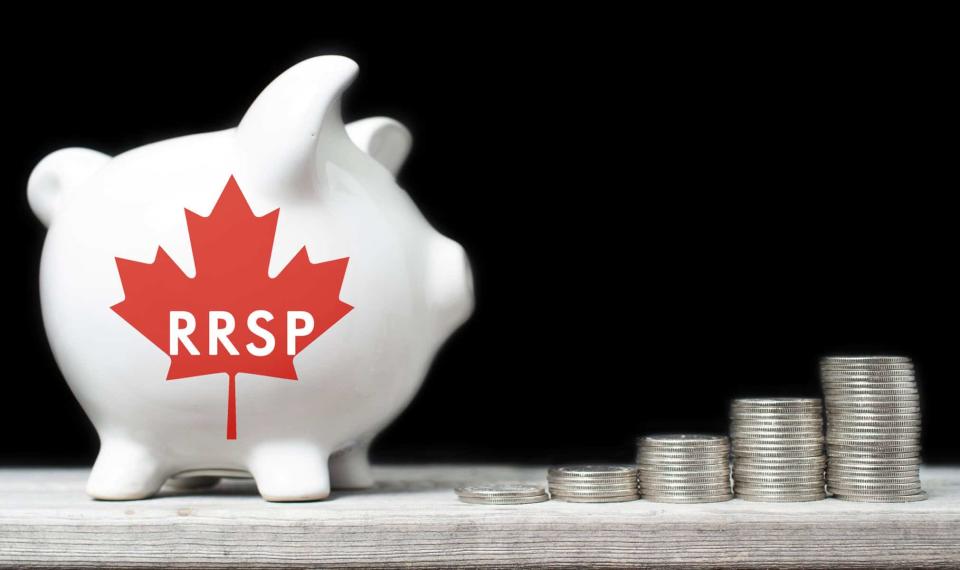Here’s the Average RRSP Balance at Age 69 in Canada

Written by Andrew Button at The Motley Fool Canada
Have you ever wondered what the average RRSP balance at age 69 is?
It’s an important question to ask because age 69 is just two years before mandatory RRIF withdrawals kick in. The RRIF is the instrument through which you withdraw your RRSP funds bit by bit in retirement. You have to start withdrawing from it at age 71, and the amount you have to withdraw increases with each passing year, starting at 5.2%.
Because the age of 69 is so close to the mandatory RRIF withdrawal age, it’s good to know where you stand in terms of your RRSP balance at that age, as it’s a factor in how much income you’ll get in retirement. In this article, I will share an estimate of the average RRSP balance at age 69 and attempt to determine whether it’s enough to retire on.
$112,000 or less
The average RRSP balance for a single 69-year-old Canadian is likely $112,000 or less. I wasn’t able to find exact data for the age of 69, but data for the 65-and-older bracket is available. We can use that to estimate the balance at 69.
The average RRSP balance in the 65 and up bracket is $112,000. Since people usually start drawing down their RRSP through an RRIF after they retire, the exact number for age 69 is probably a little lower than the average for the entire age cohort. As an educated guess, I would imagine that at 69, Canadians have between $100,000 and $112,000 in their RRSPs. That they have less than $112,000 is a near certainty, given that 90% of Canadians are drawing down their RRSPs before 69.
What to do if you don’t have enough to retire on
If your RRSP balance is less than $112,000 at 69, you may worry about your ability to retire at age 71. $112,000 invested at 2.9% – the weighted average yield on the TSX Composite Index – is only $3,250 per year. Plus, at age 71, you have to start drawing down your RRSP. What is a retiree to do?
Some investment ideas
One way to make your retirement income go further is to invest in index funds. Such funds give you the average return for the index they track, less a small fee. Often, the management fee is 0.1% or less, which makes it pretty negligible.
Consider the iShares S&P/TSX 60 Index Fund (TSX:XIU). It’s an index fund built on the TSX Composite Index, the 60 largest Canadian stocks by market cap. It is highly diversified, with 60 stocks, far more than is needed to capture most of the statistical diversification benefit. The fund has an ultra-low fee (0.16%), which means that not much of your return will be paid to portfolio managers. Finally, as Canada’s most popular index ETF, it is very liquid, which also lowers transaction costs.
If you hold a diversified portfolio of ETFs like XIU, you’re likely to do well over the long term. That could give you a fighting chance at making a relatively small RRSP go a long way. And, no matter what happens, it is likely to give you better returns than you’d earn making risky bets on volatile stocks.
The post Here’s the Average RRSP Balance at Age 69 in Canada appeared first on The Motley Fool Canada.
Should you invest $1,000 in iShares S&P/TSX 60 Index ETF right now?
Before you buy stock in iShares S&P/TSX 60 Index ETF, consider this:
The Motley Fool Stock Advisor Canada analyst team just identified what they believe are the 10 best stocks for investors to buy now… and iShares S&P/TSX 60 Index ETF wasn’t one of them. The 10 stocks that made the cut could potentially produce monster returns in the coming years.
Consider MercadoLibre, which we first recommended on January 8, 2014 ... if you invested $1,000 in the “eBay of Latin America” at the time of our recommendation, you’d have $20,063.88!*
Stock Advisor Canada provides investors with an easy-to-follow blueprint for success, including guidance on building a portfolio, regular updates from analysts, and two new stock picks each month – one from Canada and one from the U.S. The Stock Advisor Canada service has outperformed the return of S&P/TSX Composite Index by 30 percentage points since 2013*.
See the 10 stocks * Returns as of 10/8/24
More reading
Fool contributor Andrew Button has positions in the iShares S&P/TSX 60 Index ETF. The Motley Fool has no position in any of the stocks mentioned. The Motley Fool has a disclosure policy.
2024

 Yahoo Finance
Yahoo Finance 